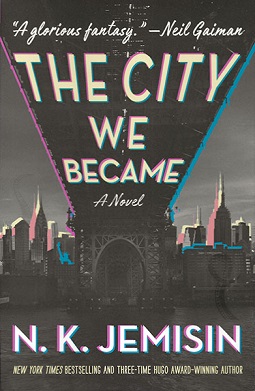
Brooklyn is a borough of New York City, coextensive with Kings County, in the U.S. state of New York. Kings County is the most populous county in the State of New York, and the second-most densely populated county in the United States, behind New York County (Manhattan). Brooklyn is also New York City's most populous borough, with 2,736,074 residents in 2020.

An egg cream is a cold beverage consisting of milk, carbonated water, and flavored syrup, as a substitute for an ice cream float. Despite the name, the drink contains neither eggs nor cream.

Noah Baumbach is an American film director and screenwriter. He is known for making witty and intellectual comedies set in New York City and has often been compared to writer-directors such as Woody Allen and Whit Stillman. His frequent collaborators include Greta Gerwig, Adam Driver, and Wes Anderson.

The Brooklyn Eagle was an afternoon daily newspaper published in the city and later borough of Brooklyn, in New York City, for 114 years from 1841 to 1955. At one point, it was the afternoon paper with the largest daily circulation in the United States. Walt Whitman, the 19th-century poet, was its editor for two years. Other notable editors of the Eagle included Democratic Party political figure Thomas Kinsella, seminal folklorist Charles Montgomery Skinner, St. Clair McKelway, Arthur M. Howe and Cleveland Rodgers.

New York City Subway nomenclature is the terminology used in the New York City Subway system as derived from railroading practice, historical origins of the system, and engineering, publicity, and legal usage. Important terms include lines, or individual sections of subway, like the BMT Brighton Line; services, like the B, which is a single train route along several lines; and stations, such as Coney Island–Stillwell Avenue, which connects multiple lines and services.

Area code 917 is a telephone area code in the North American Numbering Plan for the five boroughs of New York City: The Bronx, Brooklyn, Manhattan, Queens, and Staten Island. It is an overlay code to all numbering plan areas (NPAs) in the city, and was intended to serve cellular, pager, and voicemail applications in the city, a restriction that was subsequently ruled impermissible by the Federal Communications Commission (FCC) while grandfathering that use in New York City. Area code 917 is also assigned to landlines predominantly in Manhattan, to relieve the shortage of numbers there.

The geography of New York City is characterized by its coastal position at the meeting of the Hudson River and the Atlantic Ocean in a naturally sheltered harbor. The city's geography, with its scarce availability of land, is a contributing factor in making New York the most densely populated major city in the United States. Environmental issues are chiefly concerned with managing this density, which also explains why New York is among the most energy-efficient and least automobile-dependent cities in the United States. The city's climate is temperate.

Rick Meyerowitz is an American artist, and author. He is best known for his work for National Lampoon magazine and its spin-offs, including his poster for the comedy film Animal House.

New York City, the most populous city in the United States, is composed of five boroughs: The Bronx, Brooklyn, Manhattan, Queens, and Staten Island. Each borough is coextensive with a respective county of New York State. The boroughs of Queens and the Bronx are also Queens County and Bronx County. The other three counties are named differently from their boroughs: Manhattan is New York County, Brooklyn is Kings County, and Staten Island is Richmond County.

Maira Kalman is an American artist, illustrator, writer, and designer known for her painting and writing about the human condition. She is the author and illustrator of over 30 books for adults and children and her work is exhibited in museums around the world. She has been a regular contributor to The New York Times and The New Yorker.
The West Bronx is a region in the New York City borough of the Bronx. The region lies west of the Bronx River and roughly corresponds to the western half of the borough.

New York City has the largest population of Italian Americans in the United States of America as well as North America, many of whom inhabit ethnic enclaves in Brooklyn, the Bronx, Manhattan, Queens, and Staten Island. New York is home to the third largest Italian population outside of Italy, behind Buenos Aires, Argentina (first) and São Paulo, Brazil (second). Over 2.6 million Italians and Italian-Americans live in the greater New York metro area, with about 800,000 living within one of the five New York City boroughs. This makes Italian Americans the largest ethnic group in the New York metro area.

The 1924 United States presidential election in New York took place on November 4, 1924. All contemporary 48 states were part of the 1924 United States presidential election. Voters chose 45 electors to the Electoral College, which selected the president and vice president.

Drunk Stoned Brilliant Dead: The Story of the National Lampoon is a 2015 American documentary film directed by Douglas Tirola. The film is about National Lampoon magazine, and how the magazine and its empire of spin-offs changed the course of comedy and humor.

The City We Became is a 2020 urban fantasy novel by N. K. Jemisin. It was developed from her short story "The City Born Great," first published in her collection How Long 'til Black Future Month? It is her first novel since her triple Hugo Award-winning Broken Earth series and the first in her Great Cities series, followed by The World We Make, released in November 2022














